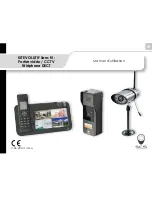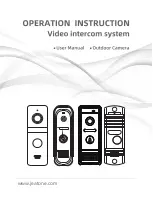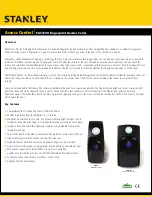
Discrete Transfer Commands
13
Using the Output Image Table
The output image table can be thought of as storage for two integers, with each integer one word long. Setting the
bit pattern required for a discrete write command can be accomplished by adding the decimal values of those bits
that are set to 1, then placing the binary sum in the output image table.
Table 3-4 shows the format of word 1 of the output image table, which includes the command number, bit shift
value, weight format, and status data format specifications. Note that the values of bits 13–15 are always 0: bit 15
is reserved; no status data formats are defined for values using bits 13 and 14.
Table 3-5 shows an example of word 1 of the output image table. In the example, bits are set to send the
following information on the discrete write command:
•
Display Gross Weight command (bits 0–7 = 00000110, 6 decimal)
•
No bit shifting (bits 8–10 = 000)
•
20-bit weight format (bit 11 = 1)
•
Remote function status data format (bits 12–14 = 000)
The integer value of the bits set in the example above are the sum of:
Command number (6) + Bit shift (0) + Weight format (2048) + Status Data Format (0) = 2054
Use Table 3-6 to determine the decimal value of word 1 of the output image table for any discrete write
command.
Bit
15
14
13
12
11
10
9
8
7
6
5
4
3
2
1
0
Decimal Value of 1
N/A
N/A
N/A
4096
2048
1024
512
256
128
64
32
16
8
4
2
1
Bit Definition
R
Status Data Format
Wt
Bit Shift
Command
Table 3-4. Output Image Table Format (Word 1), Showing Decimal Values for Bits Set to 1
Bit
15
14
13
12
11
10
9
8
7
6
5
4
3
2
1
0
Decimal Value of 1
0
0
0
0
2048
0
0
0
0
0
0
0
0
4
2
0
Bit Definition
R
Status Data Format
Wt
Bit Shift
Command
Table 3-5. Example of Output Image Table Format (Word 1)
Command
+
Bit Shift
+
Weight Format
+
Status Data Format
=
Total Value in
Output Image Table
Number
0
0
16-bit
0
Remote Function
0
1
256
20-bit
2048
2
512
3
768
4
1024
5
1280
6
1536
7
1792
Table 3-6. Chart for Finding Decimal Value of Output Image Table (Word 1)
DISCONTINUED
















































